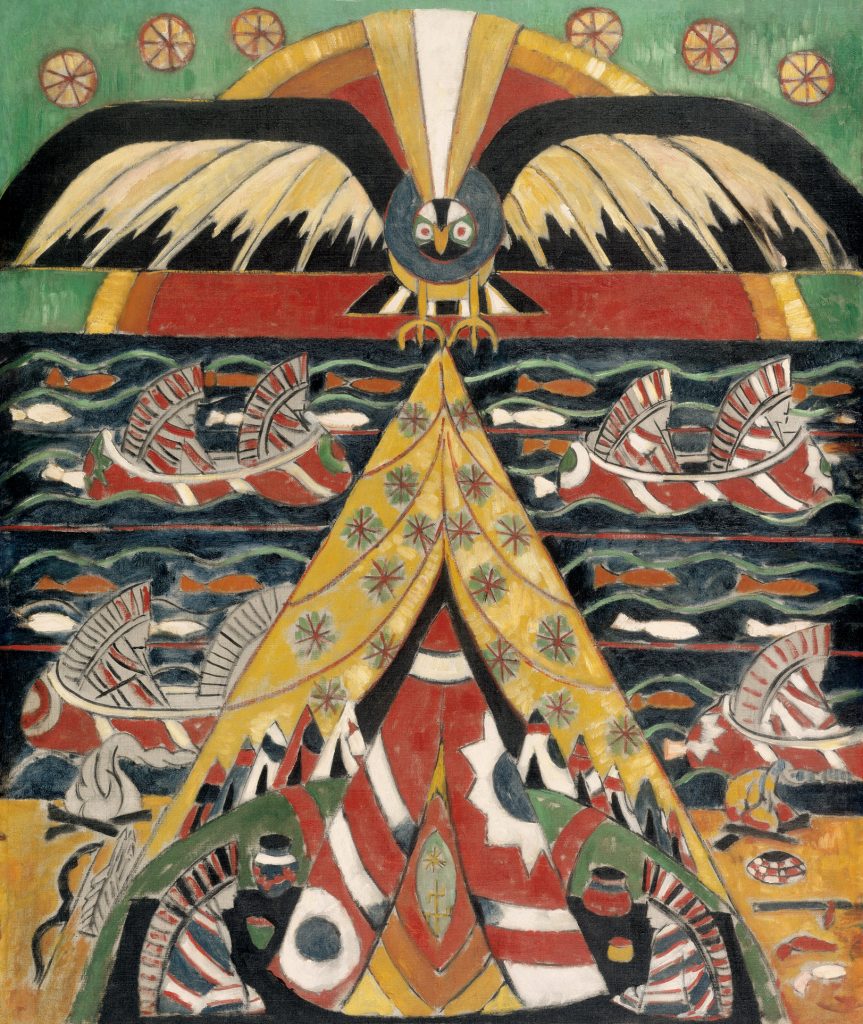John James Audubon (artista)
John James Audubon fue un arista-naturalista autodidacta cuya intención era claramente científica. Su...
ver artistaStudents will create two-dimensional patterns in black ink and then paint within those patterns. The students may choose to draw wavy, squiggly or other types of lines for their patterns. The lesson will also focus on the process of painting and the routines of cleaning up after a painting activity.

Indian Fantasy, by Marsden Hartley
Introducción/ Calentamiento
Procedimiento de la actividad de enfoque
*Note: The paper can be oriented either horizontally or vertically for this project.
Cerrar
Actividades de extensión para profesores
Actividades de extensión para las familias
Escrito por Andrea Saenz Williams
Vocabulario
Native American
nature
Materiales
11 x 15” sheets watercolor paper
rotuladores Sharpie no tóxicos
nontoxic tempera cakes
paintbrushes
cups for water
paper towels
Libros sugeridos para la biblioteca del aula
Brocket, Jane. Spotty, Stripy, Swirly: What Are Patterns? Millbrook, 2012. [ISBN 978-0-7613-4613-5]
Bryan, Ashley. Beautiful Blackbird. Simon/Atheneum, 2003. [ISBN 978-0-689-84731-8]
Chocolate, Deborah M. Newton. Kente Colors. Illustrations by John Ward. Walker, 1997. [ISBN 978-1-41312-866-6]
Ehlert, Lois. Feathers for Lunch. Harcourt, 1990. [ISBN 978-0-15-230550-5]
Ehlert, Lois. Lots of Spots. Simon/Beach Lane, 2010. [ISBN 973-1-44240-289-8]
Kuskowski, Alex. Super Simple African Art: Fun and Easy Art from around the World. ABDO, 2012. [ISBN 973-1-61783-210-9]
Morris, Ann. Hats, Hats, Hats. Photographs by Ken Heyman. Lothrop, 1989. [ISBN 978-0-688-06338-2]
Pluckrose, Henry Arthur. Pattern. Childrens Press, 1995, 1994. [ISBN 973-0-329-56924-2]
Swinburne, Stephen R. Lots and Lots of Zebra Stripes: Patterns in Nature. Boyds Mills, 2001, 1998. [ISBN 978-0-329-59955-3]
John James Audubon fue un arista-naturalista autodidacta cuya intención era claramente científica. Su...
ver artistaLiving as an expatriate in Berlin prompted Marsden Hartley to reflect upon his native country and his own...
ver artistaVea cómo las aves de Audubon cobran vida a través de una experiencia inmersiva desarrollada por la granja creativa OLO febrero-...
ver noticia